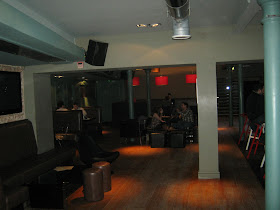
The main reason for this guest pub review is as a public service because of its close proximity to Newcastle races and being just off the A1 it's a doddle to find. I left the accommodation to the wife for a day trip to the races and this is what she booked... my only request was for a pub with proper beer on, and this place had a Cask Marque.
The accommodation is provided by the Innkeepers Lodge which is just across the car park, but this is set to become a Premier Inn or somesuch later this month so there'll be no breakfast provided and I can't imagine the pub staff being quite so helpful in the future. It's also worth pointing out that adjacent to the pub is a busy A-road, a McDonalds and a 24 hour garage - it's not sounding great is it? Honestly, it's not quite that bad...
But firstly, this place is out on a limb. Not ideal if you fancy a crawl around Newcastle, so don't book here if you want the city centre experience. Having said that, I wouldn't imagine you get many hen or stag do's staying this far out, so if you like a quiet gallon or two it's swings and roundabouts.
Secondly, most of the online reviews focus on the food, which is in fairness pretty decent - it's a big place serving lots of food to the races crowd and day trippers. The decor is a recent take on olde worlde country pub; not unpleasant, but when teamed up with a dozen plasmas scattered around the bar area it's all a bit contrived.

There's a long bar with no dedicated food ordering till, so it's a right pain in the arse when you just want to grab a couple of swift pints and some once-a-year pub amateur is in front of you ordering one drink at a time for his entire family, before moving onto starters, mains & desserts ("do you want chips or salad with that?" "I'll just go and check"...)
There's the usual array of cooking lager and bitter, a decent selection of bottled beers, four barrels of good wine on tap (for the ladies) and three pumps serving decent hand pulled ale. They're currently running a
"Summer in a Glass" promotion, and this months selection was the ubiquitous Black Sheep, Sharp's Doom Bar and Thornbridge Jaipur.
For research purposes I had a go at them all, but the Jaipur was on great form; however, at 5.9% I wouldn't recommend it for a dawn-til-dusk session. Prices were well within my pain threshold when in a round - two ladies and two gentlemen's drinks for less than £2.20 per drink.
So that's the pub; good points are the better than average beer and food, less than a mile to the races and very handy for travelling in by car or coach. Bad points, it's a long way into town and a bit soulless I suppose, but once you factor in the extortionate bar prices at the race course this place is well worth a visit.


















































